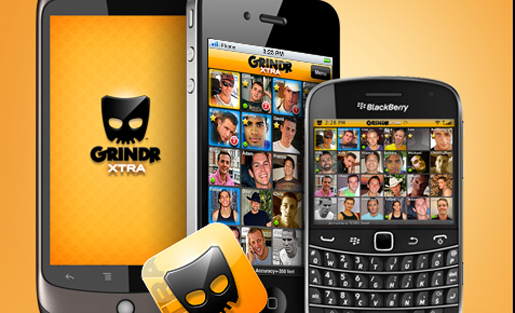Unless you’re a gay man with a smartphone, I’ll forgive you for not having heard of Grindr, a social-networking application for gay men which has seen an epic rise, becoming one of the most visible and popular apps of its kind in the gay community since its launch a year and a half ago.

Recently, I was dismayed to see Grindr described in a Slate post as a “gay hookup app.” I was dismayed not because it’s a wholly inaccurate description, but because its an incomplete one. It is true that gay men, as a community, are connected in broadest terms by a shared sexuality, and make no mistake, Grindr beautifully addresses this undeniably predominant “gay hookup” use case. But as a gay man who’s had this particular “gay hookup app” installed on his iPhone for the past year and a half, I can tell you that because of the idiosyncrasies of what it means to be a “member of the gay community,” there is more going on here than gay men just connecting to have sex.
For those who are not gay, don’t have a “gay hookup app” installed on their smartphone, or don’t own a smartphone at all, there are are a few things I’ve noticed about Grindr that might inspire digital entrepreneurs and community builders — especially those working with diverse, local communities.
Usability
No app presents a truly flawless user experience, and bugs plague even the most sought-after apps. Lately, Grindr seems less prone to crashing than similar apps on my phone, and its interface behaves how you would expect and makes the act of exchanging text and other media dead simple. The app’s interface is also to the point. When you fire it up, there are no menus — just men: square photos with screen names, laid out in a grid and as a default ordered by distance from your location. When someone sends you a message, his photo moves to the top of the grid. There are plenty of extras features to help you organize and keep track of your favorite users as well as to share photos and location, but Grindr knows they are exactly that — extras. The Grindr experience is such that a user can comfortably spend time there and connect with the community for whatever purpose suits him.
The community drives what it does
Grindr’s simplicity makes it easy for users to guide their own experience with the application. I can quickly flip through nearby users and start up a conversation with anyone, in just a few swipes of the finger.
I first installed Grindr on my phone out of curiosity when I lived in downtown Phoenix, around the same time construction was completed on a Sheraton a few blocks away. The first conversation was with a convention visitor in town with his partner: “Hi Cody, where is the best gay-friendly restaurant within walking distance?” Those first conversations were part chat, part concierge. Hardly the “gay hookup” use case. It was one member of the community helping out another. In spite of whatever reputation of gay men Grindr might have, the app doesn’t force users to interact in some seedy, stereotypical way — if offers an open format where users can chat, meet up, and everything in between.
Embrace overlapping communities
Wherever we are physically situated, we’re part of a community — people who live near one another, work together, go to school together. We are more connected to some communities than others, but for pretty much all of us, those communities overlap, and one reason Grindr is compelling is its ability to bring together the overlapping communities of sexuality, geography, interests, etc.
I’ll confess to finding it highly fascinating to open up Grindr during my lunch break at work, where I can watch those communities overlap before my eyes as I see co-workers and baristas at my favorite coffee shop pop up on the screen. I can understand how people might flinch at the idea of opening up an app like Grindr near one’s workplace during business hours, but there is something powerful about realizing someone has something in common with you, even if it is your boss or subordinate.
Unless your profile contains particularly scandalous information, what’s the harm in using tools to discover and interact with people with whom you share multiple communities, whether the thing you have in common is your sexuality, the place you work, a fondness for bowling, or all three?
A quick scan of phrases in Grindr profile descriptions further demonstrates how tools like this are unique in fleshing out opportunities to connect: Gaymer. Gay professional. Come Occupy Seattle with me. Need gym buddy at downtown 24 Hour Fitness. These are expressions of self-identity, but they’re also calls to connect with other communities that overlap in the gay community. Imagine if you were a gay person in Seattle who loved video games (gaymer!) — here’s an application that helps you connect with not just people nearby, and not just gay people nearby, but gay people nearby who are also gamers — Grindr is a particularly compelling application that is worth your time.
It’s that kind of slick, community-driven user experience that greatly contributes to Grindr’s success. Grindr and apps like it can always strive to do an even better job of connecting members, and the challenge is finding ways to improve the ease of drilling down to these overlapping communities without sacrificing simplicity and ease-of-use.
So download the app and try to answer the question of how Grindr could accomplish that. Maybe your answer will help inspire the solution for your own wicked community-building challenge.

